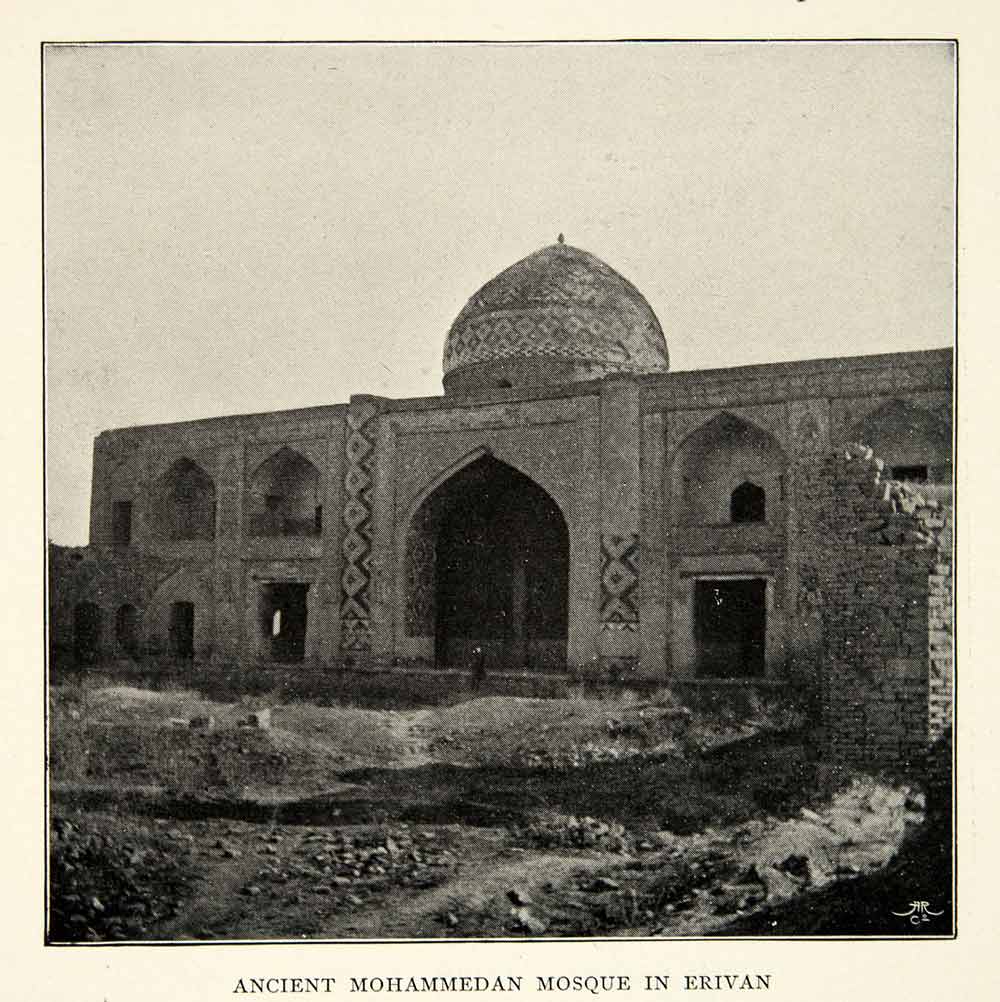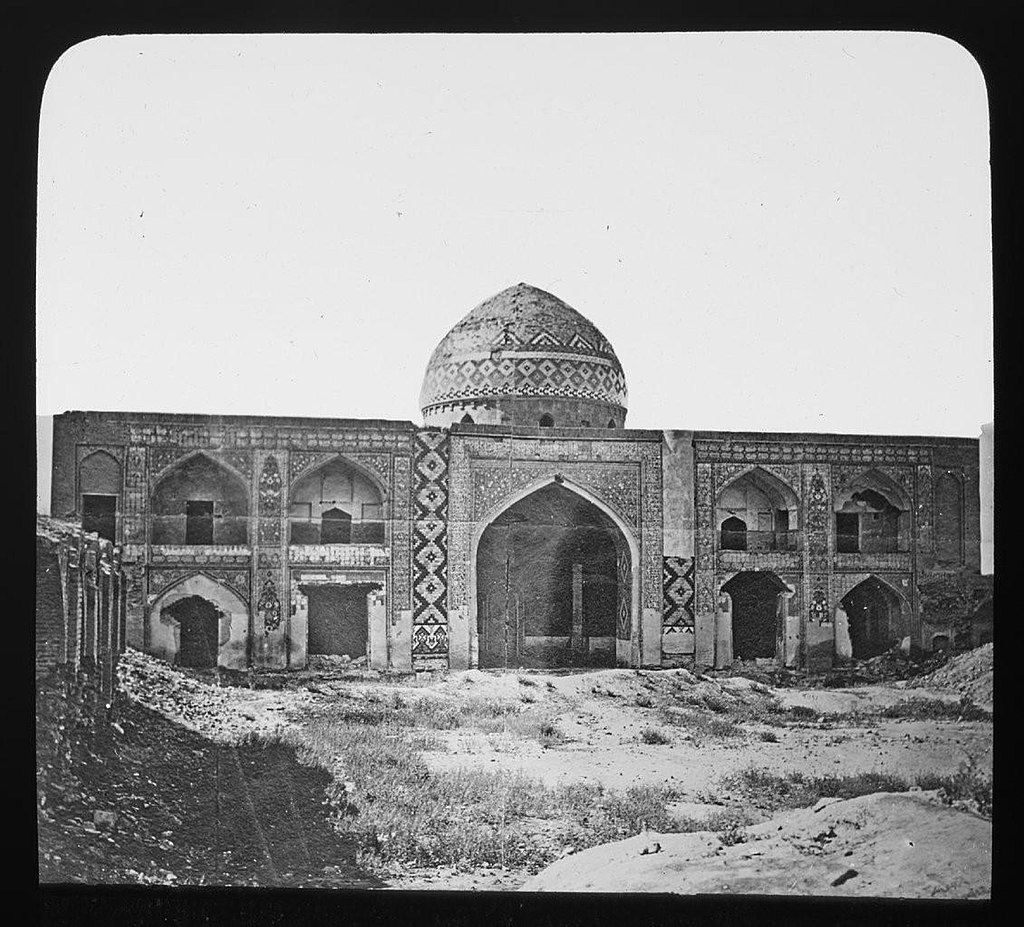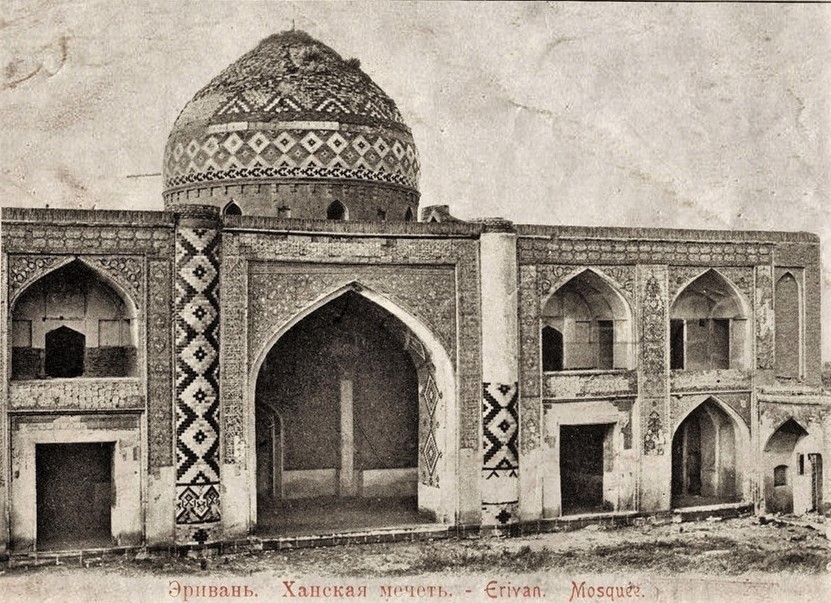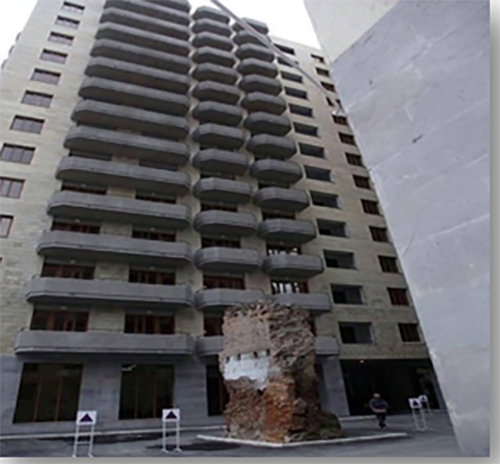Sardar Mosque
Iravan
Iravan
architecture
Currently, only a small fragment of the Sardar mosque complex remains, a piece of one wall about 2-3 meters wide and 3-4 meters high. On this site, the construction company "Glendale Hills" has built a residential complex consisting of 18 blocks, each 14 stories high.
The Sardar Mosque in the city of Iravan
Despite being presented under various names, the subject at hand is a rare architectural monument officially documented as the Sardar Mosque. That is, a single mosque has been referred to differently in various periods. In some documents from the period of Tsarist Russia's occupation of the Iravan fortress, this mosque is mentioned as the Abbas Mirza Mosque. It appears that the mosque was named after Crown Prince Abbas Mirza because he reconstructed it in the early 19th century. The German researcher August Haxthausen visited Iravan in August 1843 and noted that one of the two mosques in the fortress (the Rajab Pasha Mosque) had been converted into a Russian-Greek church, while the other – the Sardar Mosque – had been turned into a weapons depot.
Renowned Russian archaeologist Countess Praskovya Uvarova visited Iravan in 1880 and described the destruction of historical and architectural monuments built over centuries. In the book "Ancient Iravan," published in Iravan in 1931, the Armenian author Yervand Shahaziz quotes P. Uvarova, mentioning that she compared the Sardar Mosque near the Khan Palace to a painting by Vereshchagin. Referring to P. Uvarova, Y. Shahaziz writes that the main dome, outer walls, columns, inner walls, and many other domes of the Sardar Mosque were adorned with colorful tiles and beautiful illustrations.
In 1928, Azerbaijani archaeologist and epigraphist Isa Azimbeyov led an expedition to Iravan. In his article "Muslim Inscriptions of Tbilisi, Iravan, and the Nakhchivan ASSR," he states that the mosque, built in the name of Shah Abbas and located near the Sardar Palace inside the fortress, was in a semi-ruined state, and several Armenian refugee families were settled in its courtyard.
Currently, only a small fragment of the Sardar mosque complex remains, a piece of one wall about 2-3 meters wide and 3-4 meters high. On this site, the construction company "Glendale Hills" has built a residential complex consisting of 18 blocks, each 14 stories high.



























